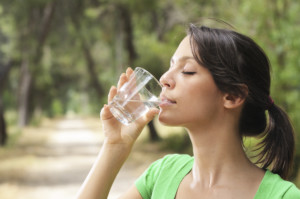Rainwater Harvesting System for Drinking Water
Water Conservation
Enjoyed but Taken For Granted
Water is one of the natural resources enjoyed but taken for granted by humans that we are now facing water shortage, especially after the 1998 dry spell in Malaysia which initiated the implementation of rainwater harvesting system. This is to ensure a long-lasting supply of water as it can provide part of our water needs, save money and is environmental-friendly. Rainwater harvesting is a simple water-recycling technique to collect rainwater from surfaces such as rooftops where the rain falls and is further stored in rainwater harvesting storage tanks before being filtered for domestic uses and irrigation.

Is it Safe to Drink?
One of the concerns when it comes to using rainwater for household usage is whether it is safe as drinking water. Rainwater goes through a long process, from evaporation of water to being trapped in clouds, condensation and finally rainfall. Hence, there are all sorts of contaminants such as dust, smoke, sand, unwanted minerals, and algae accumulated in the water – all of these can be harmful to health. Even the rooftop, rain gutters, and pipes used to collect rainwater can contribute to contamination. For example, bird excretion on the roof or in the gutters and the chemical from the roof tiles can be washed away in the rainwater collected. Nevertheless, we can treat rainwater so that it is safe to be drinking water via a proper rainwater harvesting and filtration system.
How to Ensure that The Water is Drinkable?
Firstly, it is important to remember that untreated rainwater is not safe to be drunk; hence pipes which are transporting non-drinkable water cannot be connected to drinking water pipes unless treated.
Secondly, keeping the rooftop, rain gutters, and pipes as clean as possible helps to remove large unwanted matter in the rainwater from entering the storage tank or rainwater harvesting tank. It is also highly encouraged to install screening mechanisms such as gutter screens for this purpose too. Other screening mechanisms like the first-flusher device can be used to remove the first batch of water from the harvesting system to remove more contaminants.
Thirdly, when water from the rainwater storage tank is needed for drinking, one must make sure that the water goes through proper treatment such as further filtration and chemical or ultraviolet (UV) treatment before being carried into the drinking water pipe. Further rainwater harvesting filtering system involves a fine fiber filter which removes particulates, and a carbon filter that removes very fine particles. The filtered water is then disinfected by, preferably, UV light as it doesn’t have chemical leftovers in the water. Other ways for disinfestation are by chemical injection or ozone generators.

Challenging But Worth It
It can be challenging to install rainwater harvesting system and treat rainwater for drinking in Malaysia due to the increasing water pollution that degrades our water resources, including rainwater. However, it is still a sustainable solution to start harvesting rainwater if we manage the treatment system properly. This is why we need to test the rainwater at a reliable lab to determine the necessary system needed to treat rainwater to gain maximum water quality and save cost for treatment.
Save Water! Save Lives!
We believe that a well-managed rainwater harvesting can help with the scarcity of our water supply for domestic, industrial and urban usage. For further information, please do not hesitate to give us a call and we will be glad to guide you.
